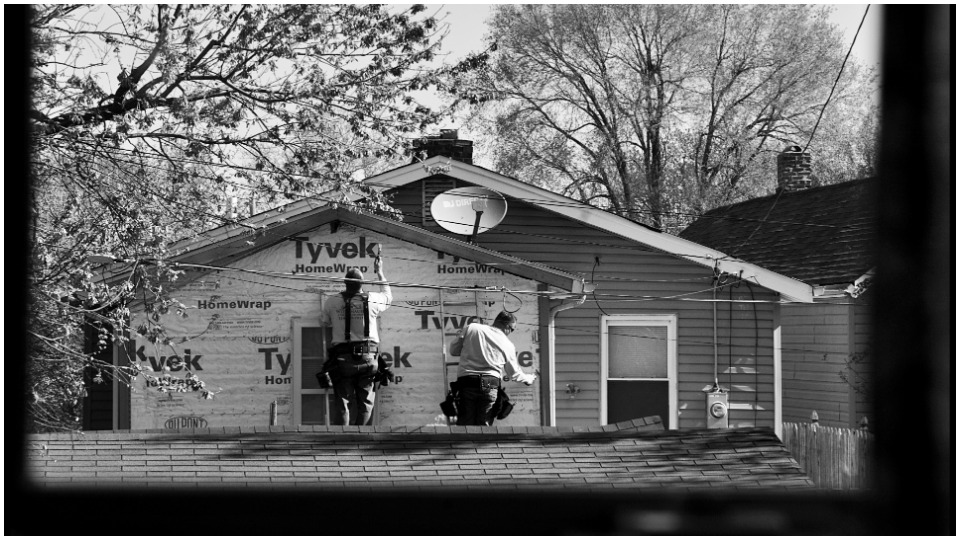
There is something unnaturally innate about our obsession with the construction and destruction of all human-made things.

How many of us have stood on the sidewalk or sat on public benches with rapt attention as crews methodically dismantled a building’s outer layers—the wood, terra cotta, brick, metal or fibrous architectural skin; the crowbars pulling out nails, sledgehammers demolishing the inner layer exposing the guts and nervous system—electrical wiring.
We cheer and watch in awe as a wrecking ball swings into contact with an old red-brick building, leaving behind a cloud of brownish dust and a pile of masonry to be, hopefully, repurposed.
What is it about this work that fills us with curiosity? Does it fulfill our need to see an artificial example of the human life cycle?
These are strange times we are living in. And with little else to do, it’s become first-nature to observe, more so than when our days were filled with public distractions.

And it’s been even more strange for “essential workers” laboring in the residential building trades. While some of us can safely shy away from the outdoors, limiting our socializing and physical distance from others, these tradespeople are coming into contact with others, exposing themselves to the unknown—risking their health due to COVID-19 to maintain our home comfort and safety.
Are they worried?
“I’m not so much worried for myself,” said Douglas E., a journeyman plumber-pipefitter in St. Louis. “I’m more concerned about making sure the people whose homes I’m working in are comfortable and not worried about exposure because I’m in and out of their house.”
“Shouldn’t that comfort knowing you’re safe from infection go both ways?” I asked.

“Oh absolutely, we are extremely thorough on making sure the client we’ve been assigned isn’t experiencing coronavirus symptoms. The dispatcher asks all the necessary questions of the client, and the company, surprisingly, has given us a ton of PPE (personal protective equipment),” he said.
At regular intervals, Douglas explained, the dispatcher will call each technician van to get health updates.
“They ask about how we’re feeling, if we’ve been exposed to anyone who might be coronavirus positive, etc. …”
“Does anything bother you about this current mess?”

“Politicians,” he said.” We’re in the middle of the worst health emergency of our generation, it’s forcing millions of people to lose their jobs, and all they [elected officials] are doing is using this crisis to benefit their election campaigns and further push their political agendas.”
His annoyance is focused in on all the tweets by Donald Trump talking up the TV ratings and viewership his coronavirus briefings have garnered. Instead of that, he says, “We should be focused on accurately tracking the virus rates, and coming together to beat this thing.”
The rat-tat-tat of hammers striking two by fours echoes throughout the neighborhood alleyway.
“You all worried about getting sick with the coronavirus?” I ask, shouting over the chain-link fence.”
“Naw, we’re lucky enough to just work on the outside; we never have to go inside,” was shouted back.












Comments